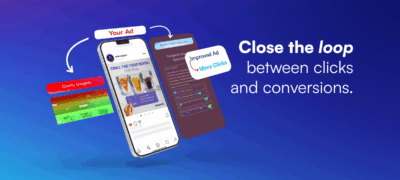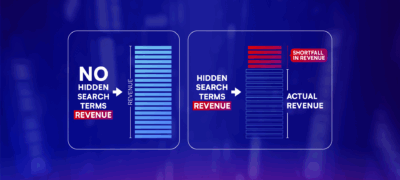
Your Google Ads Metrics Look Great, So Why Aren’t You Growing?
At a glance, everything looks great. Your Google Ads account is hitting ROAS targets. Spend is stable and efficient. Branded search…
At a glance, everything looks great.
Your Google Ads account is hitting ROAS targets. Spend is stable and efficient. Branded search campaigns are converting like clockwork. Maybe your agency is even sending reports that show steady performance and green arrows across the board.
But revenue isn’t moving. Growth has stalled.
If you’re seeing solid numbers but your business isn’t moving forward the way you expected, you’re not alone. This is the DTC plateau: a phase that’s easy to fall into when strong platform metrics distract from a lack of true business momentum. And it’s more common than most marketers realize.
Good Performance Can Create a False Sense of Momentum
When Google Ads is working well, it can be easy to assume it’s doing all it can. You’re converting traffic, you’re hitting KPIs and you’re seeing what feels like success. But in reality, you may be over-optimized for efficiency and under-invested in the areas that drive long-term growth.
I’ve seen this play out across brands in categories like apparel, home decor and even national retail. In many of these cases, a strong ROAS came from all Google segments: branded campaigns, nonbrand campaigns and shopping efforts that captured demand already in motion. These can be high-efficiency, low-effort wins, but they don’t build pipeline. They sustain it, until there’s nothing left to sustain.
Here’s what that can look like:
- A heavy reliance on branded search and shopping campaigns
- Few net new customers entering the funnel
- Static audience targeting
- Limited testing of new keywords, creative or landing pages
- Lower impression share on non-brand queries
If these sound familiar, your account may be more optimized for maintaining performance than expanding reach.

Growth Doesn’t Come From Efficiency Alone
When you’re managing $50K to $500K or more in monthly ad spend, performance isn’t just about squeezing more out of what already works. It’s about using budget as a lever to reach new audiences, test new messages and expand into new channels.
That kind of growth requires tension. It means exploring campaigns that don’t look efficient right away. It means investing in YouTube or Demand Gen even when the short-term ROAS doesn’t look pretty. It means shifting KPIs based on the part of the funnel you’re targeting instead of holding everything to the same standard.
Growth often looks messy before it looks efficient. The brands that scale understand this and plan for it. The ones that don’t often end up shrinking without realizing why.
The Hidden Cost of Performance Goals
Some brands invest in incrementality testing to understand true channel value, which is a big step in the right direction. And using iROAS to adjust in-platform targets based on those findings can be a smart move. But it has to be paired with the right controls.
In several cases I’ve seen, brands applied iROAS universally by raising TROAS targets across nonbrand and shopping without adjusting for new customer acquisition. The result was overly aggressive targets that pushed Google to chase only the safest, least incremental conversions.
Used in isolation, iROAS can unintentionally deprioritize prospecting. Without upstream investment or segmentation, spend becomes concentrated in the same audiences week after week. The funnel contracts.
To get the most out of iROAS, it should be layered with a new customer acquisition strategy. That might mean excluding past converters or even site visitors from certain campaigns. It might mean applying iROAS goals further down the funnel while keeping upper funnel efforts focused on generating demand with broader reach and looser constraints.
Otherwise, what starts as an effort to improve measurement can quietly become an optimization trap.
In many cases, I’ve also seen brands relying heavily on GA4 or last-click attribution as their source of truth. Because those systems never capture the full impact of upper funnel channels like YouTube or Demand Gen, this often leads to a reluctance to invest in anything that might make the numbers look worse. Without a measurement approach that reflects the influence of upper funnel investment, or a willingness to test beyond surface-level metrics, it becomes difficult to see what’s actually driving results, leaving growth decisions based more on assumptions than clarity, and more focused on short-term optics than long-term scale.

The Problem Isn’t Google Ads; It’s How Growth Is Defined
The best-performing accounts I’ve seen aren’t just efficient, they’re adaptive. They invest in upper funnel channels. They fund creative iteration. They push into new formats and platforms. And they know that not every dollar spent will come with clean, immediate attribution.
They define success by how many new customers they’re adding, how their funnel is evolving and whether they’re setting themselves up for compounding gains.
They know growth isn’t supposed to feel comfortable.
How to Know If You’re Stuck
Even if your metrics look good, these signs can indicate a plateau:
- Net new customer acquisition is flat or declining
- You’re seeing high ROAS but from the same audiences over and over
- Spend is concentrated in branded terms and shopping
- Campaign structure hasn’t evolved in months
- Creative testing has slowed or stopped
- Upper funnel channels like YouTube are underutilized or underfunded
- You rely heavily on remarketing to drive conversions
These signals are easy to miss if you’re only looking at top-line metrics like ROAS or CPA.
What to Do Instead
Breaking through a growth plateau starts with reframing what “good” performance looks like. That might mean:
- Shifting from ROAS-based goals to contribution margin or new customer CAC/ncROAS
- Using holdout tests or lift studies to validate incremental value
- Segmenting audiences to isolate prospecting from retention
- Funding YouTube, Demand Gen and other upper funnel tactics with enough time and budget to generate signal
- Expanding creative testing to avoid fatigue
- Improving landing page relevance and UX to support broader targeting
- Accepting that early performance on new campaigns may look messy before it compounds
This doesn’t mean abandoning performance. It means balancing performance with growth.

Final Thoughts
A high-performing Google Ads account can be misleading. It can make you feel like everything is working even when growth has stalled.
If your brand is stuck despite strong platform metrics, the issue might not be your performance. It might be your definition of success.
True growth starts with the willingness to look beyond what’s easy to measure and invest in what actually moves the business forward.
Stay in the loop! Sign up to get our newest blog articles and exclusive resources delivered straight to your inbox.
Newsletter Signup
Related Articles

- CRO
- Paid Social
Why Every DTC Brand Owner Should Be Using Microsoft Clarity to Make Better Ads
Let’s say your Google or Meta Ads account is humming. You’re hitting ROAS targets. Spend is stable. Your best-performing creatives are…

- PPC
The High Cost of Hidden Search Terms: How Google Skims Profit from Advertisers
Google claims that search terms are hidden for privacy reasons and not performance reasons, so we wanted to find out: Do…

- Paid Social
Meta Audit Trends: The Recurring Issues Holding Back Performance
Over the past few months, we’ve audited multiple Meta ad accounts across different industries, and the same core issues keep surfacing.…
How can we help you grow?



